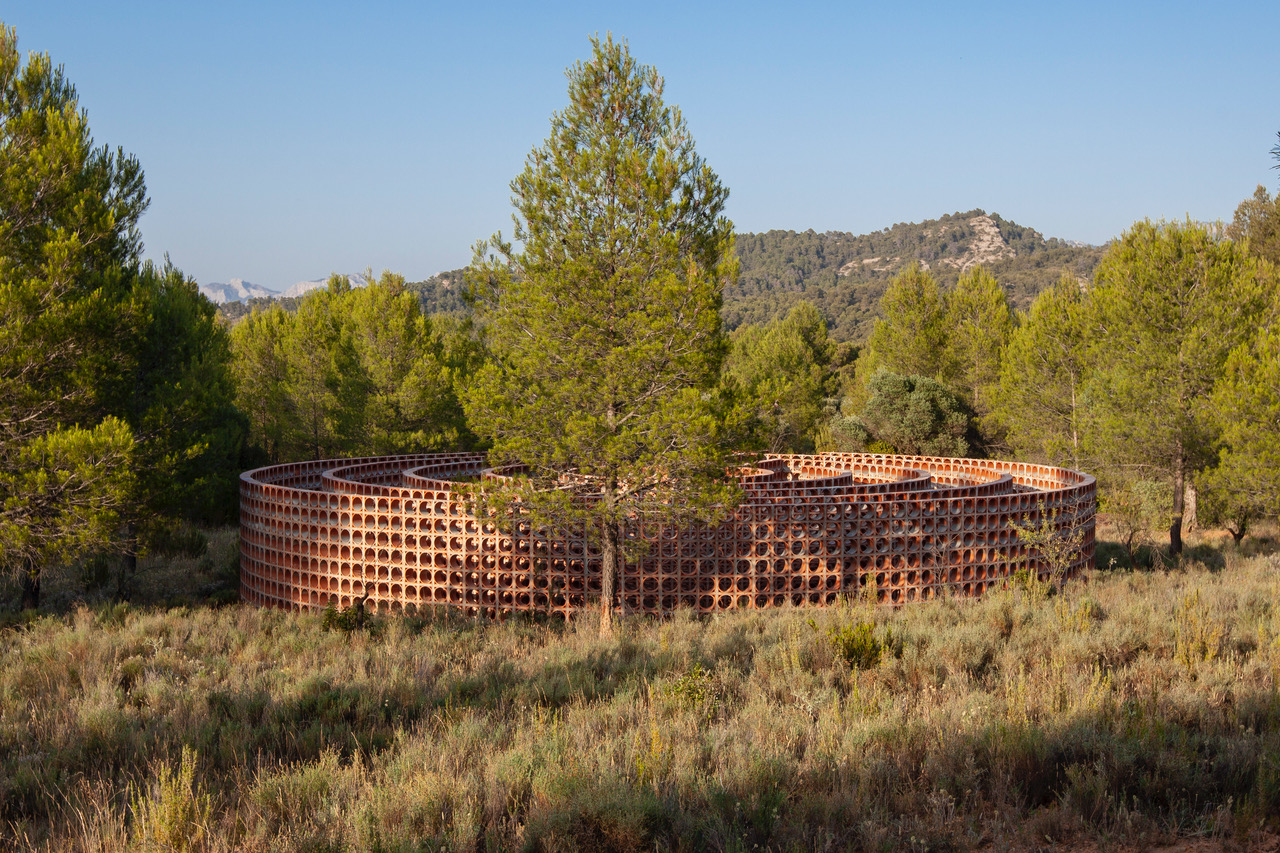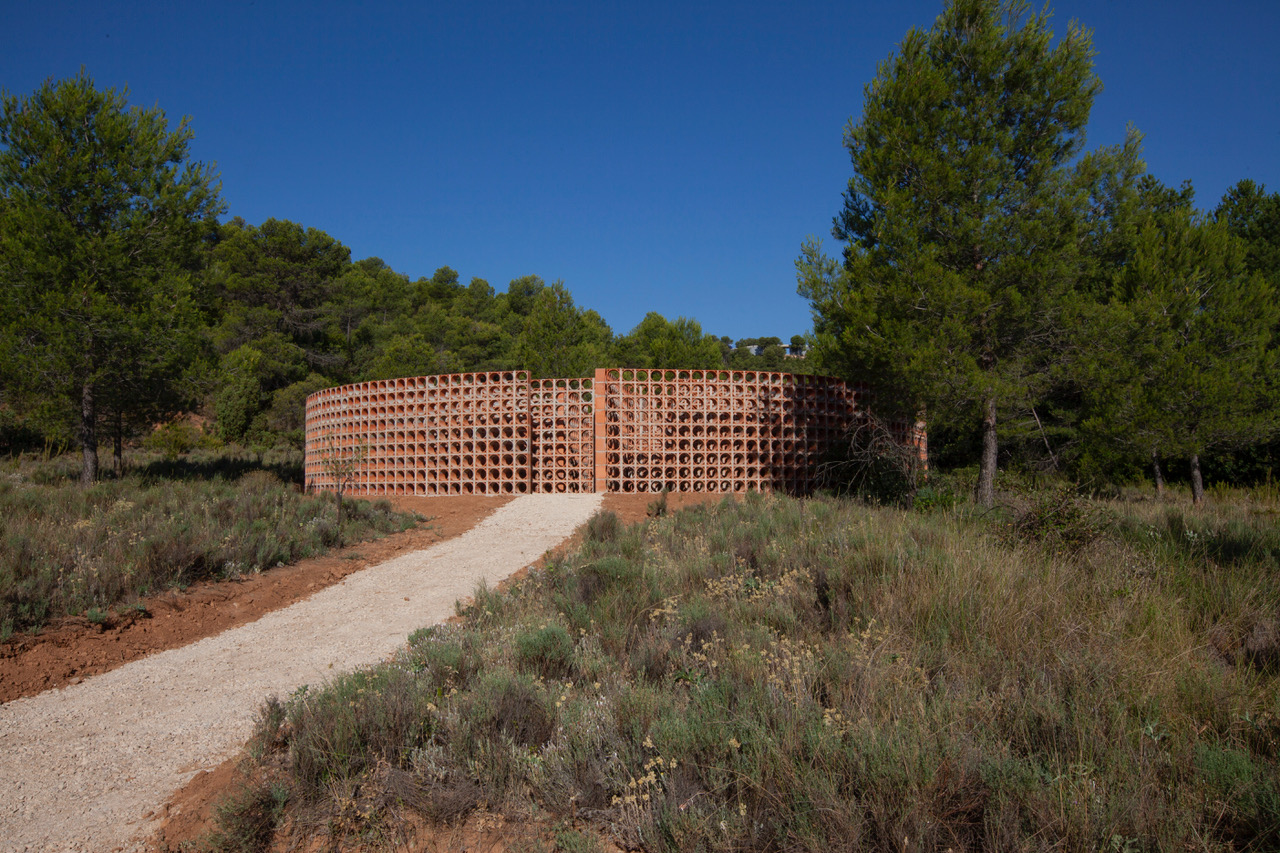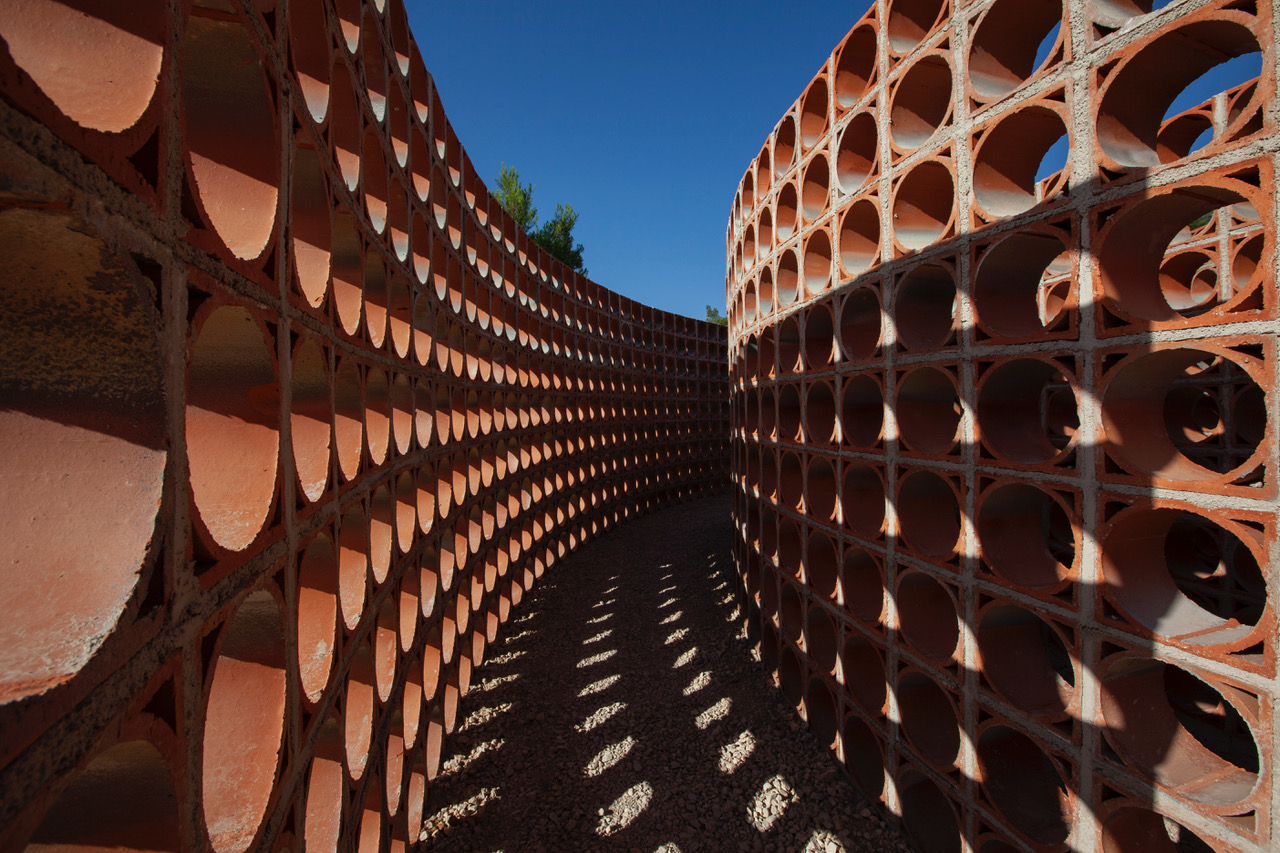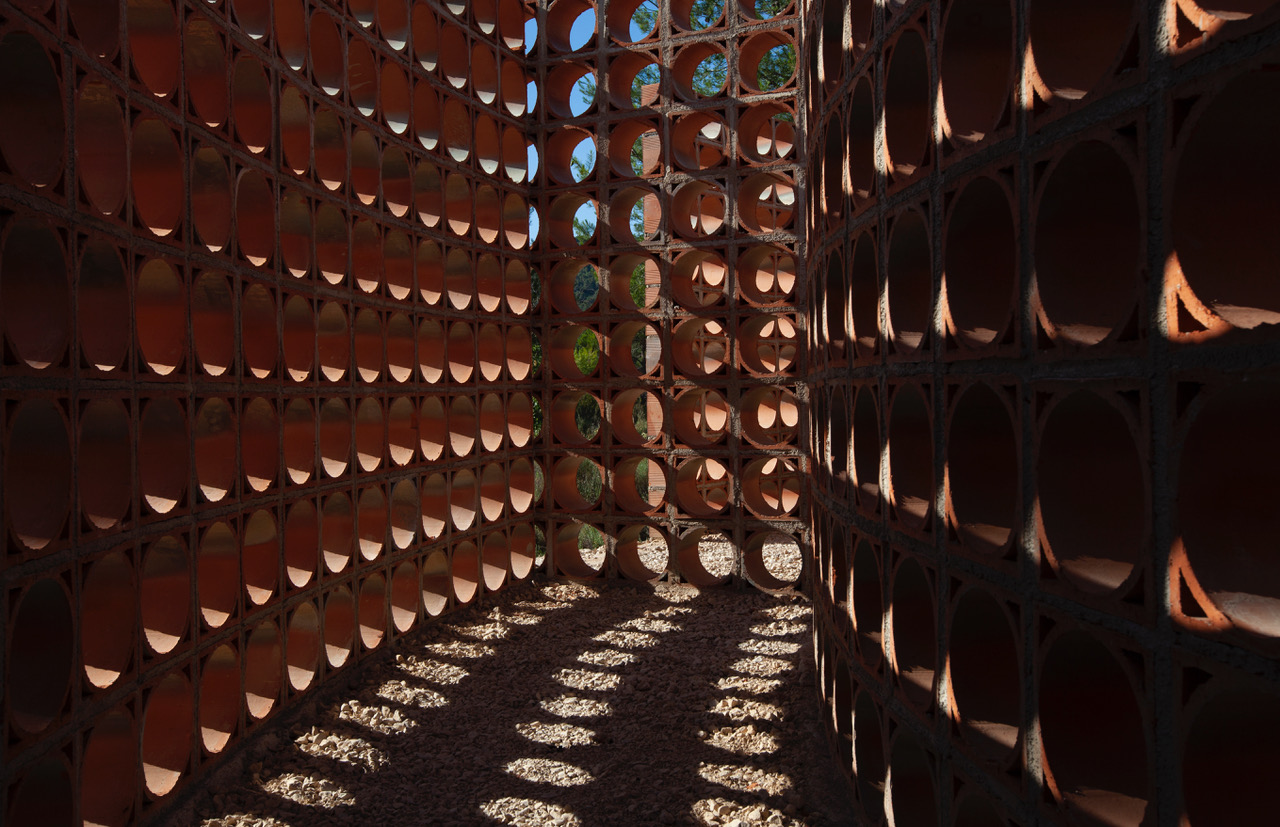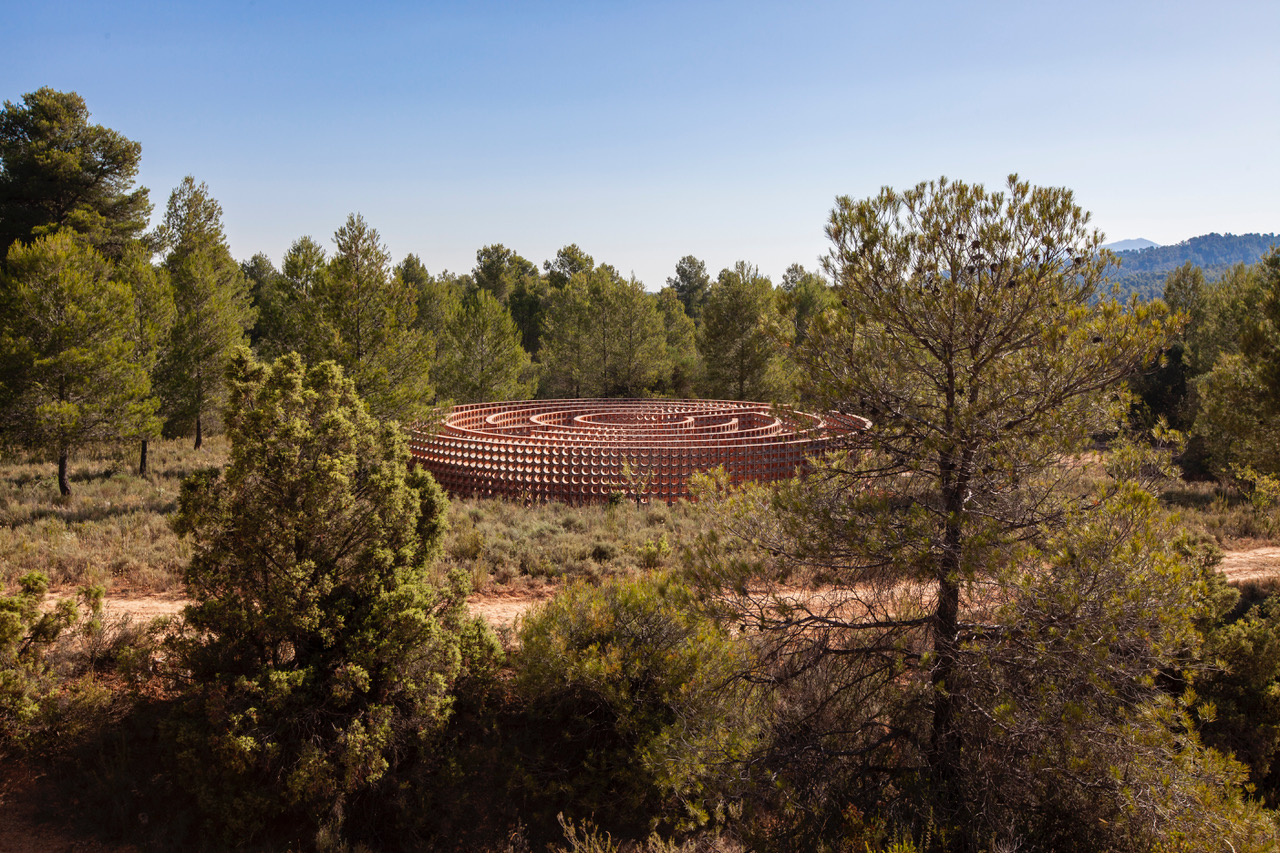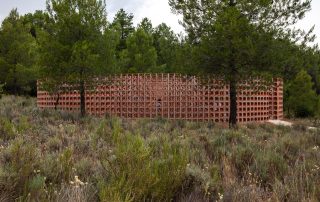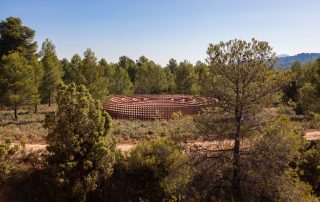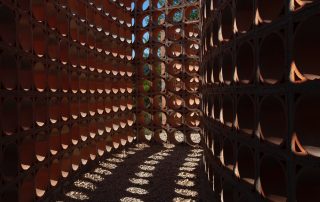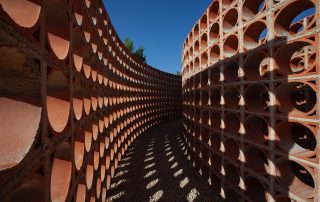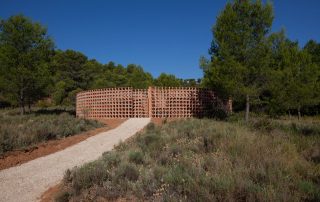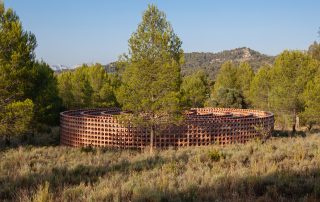Truth Always Appears as Something Veiled, 2019
CDMX,1974. Hector’s work blends the strictly conceptual and aesthetic sense with artistic practice and a skilfull treatment of the tensions between language. form, process and narrative. He explores the ability ot provoking deep controversy in a late-capitalism background through the study of the social and historical implications, rendering his work ideal for public spaces.
Hector Zamora will create a labyrinthic structure referencing the drawing of a labyrinth discovered in a stone found in Knidos, Turkey. This type of labyrinths provides a circular route that leads to the center, and returns, without presenting alternative options or shortcuts -labyrinths that oppose those from the West, which create a network of options for the walker. The perforated brick walls obstruct the view partially, offering «a new perception between the hidden and the open». This visual permeability aims to recover the semi-translucent and semi-open walls of the labyrinth, and establishes a contrast with the classic concept of Labyrinth, in which the wall makes vision impossible and obliges walkers to cross it in search of its center.
With the support of Prelis (www.prelis.pt)
CDMX,1974. Hector’s work blends the strictly conceptual and aesthetic sense with artistic practice and a skilfull treatment of the tensions between language. form, process and narrative. He explores the ability ot provoking deep controversy in a late-capitalism background through the study of the social and historical implications, rendering his work ideal for public spaces.
Hector Zamora will create a labyrinthic structure referencing the drawing of a labyrinth discovered in a stone found in Knidos, Turkey. This type of labyrinths provides a circular route that leads to the center, and returns, without presenting alternative options or shortcuts -labyrinths that oppose those from the West, which create a network of options for the walker. The perforated brick walls obstruct the view partially, offering «a new perception between the hidden and the open». This visual permeability aims to recover the semi-translucent and semi-open walls of the labyrinth, and establishes a contrast with the classic concept of Labyrinth, in which the wall makes vision impossible and obliges walkers to cross it in search of its center.
With the support of Prelis (www.prelis.pt)
Héctor Zamora creará una estructura laberíntica con referencia al dibujo de un laberinto descubierto en una piedra encontrada en Knidos, Turquía. Este tipo de laberintos proporciona una ruta circular que lleva hasta el centro, y vuelve, sin presentar opciones alternativas o atajos -laberintos que se oponen a aquellos occidentales, que crean una red de opciones para el caminante. Las paredes de ladrillo perforado obstruyen la vista parcialmente, ofreciendo “una nueva percepción entre lo oculto y lo abierto”. Esta permeabilidad visual pretende recuperar los muros semi-translúcidos y semi-abiertos del laberinto, y establece una contraposición con el concepto clásico de “laberinto”, en los que el muro imposibilita la visión y obliga a recorrerlo en búsqueda de su centro.
